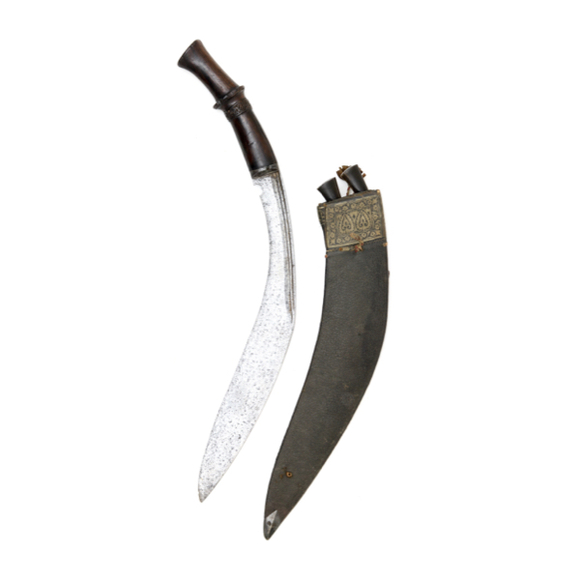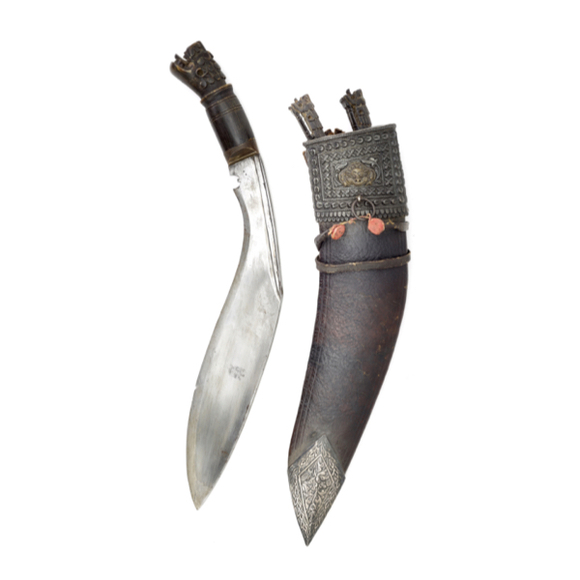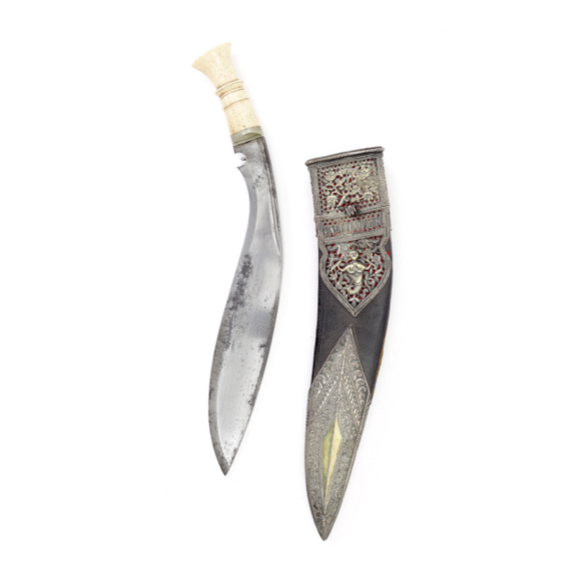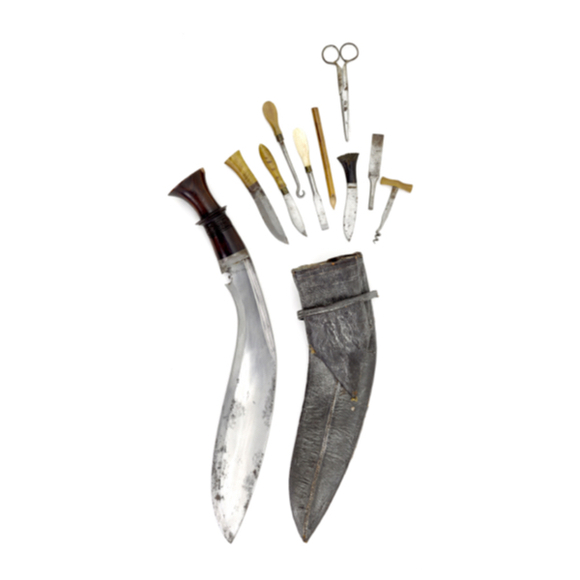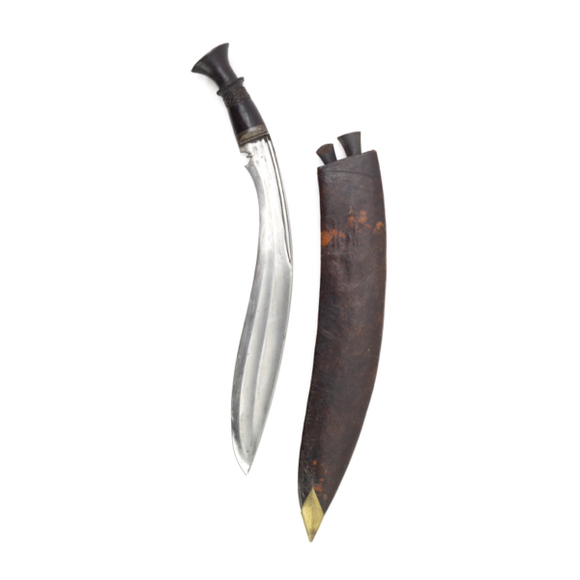Language: Nepali
Source: A 1931 dictionary
Description
Tīna cirā (तीन चिरा) literally means "three splits". It is the proper Nepali spelling for what is known among collectors as tin chirra, a name for a khukuri that has three broad fullers in the blade. Each cirā, then, refers not to the fuller itself but to the sharp ridge created between them.
According to Taylor, cirā is derived of cirnu, literally "To split, rip up, cut, lacerate". It is also used in the slightly different form, ciro (चिरो) to describe: "A splinter; cut, slice; (esp.) a slice of cucumber cut lengthwise." 1

A classic tīna cirā khukurī (तीन चिरा खुकुरी).
Sold by Mandarin Mansion in 2020.
Sub-types of groove layouts
Among antiques, we typically encounter four main types of blade:
Āṅa (आङ); flat, like a kitchen knife.2
Āṅa khol (खोल् आङ); a single fuller running along the spine. (Commonly called ang khola.)
Du'i cirā (दुइ चिरा); "two split", two fullers in the blade. (Commonly called dui chirra.)
Tīna cirā (तीन चिरा); "three split", three fullers in the blade. (Commonly called tin chirra.)
Also see: A Nepalese khukurī glossary
Notes
1. Sir Ralph Lilley Turner; A comparative and etymological dictionary of the Nepali language. London: K. Paul, Trench, Trubner, 1931.
2. Resham Shercha, an ex Ghurka. Personal communication.


